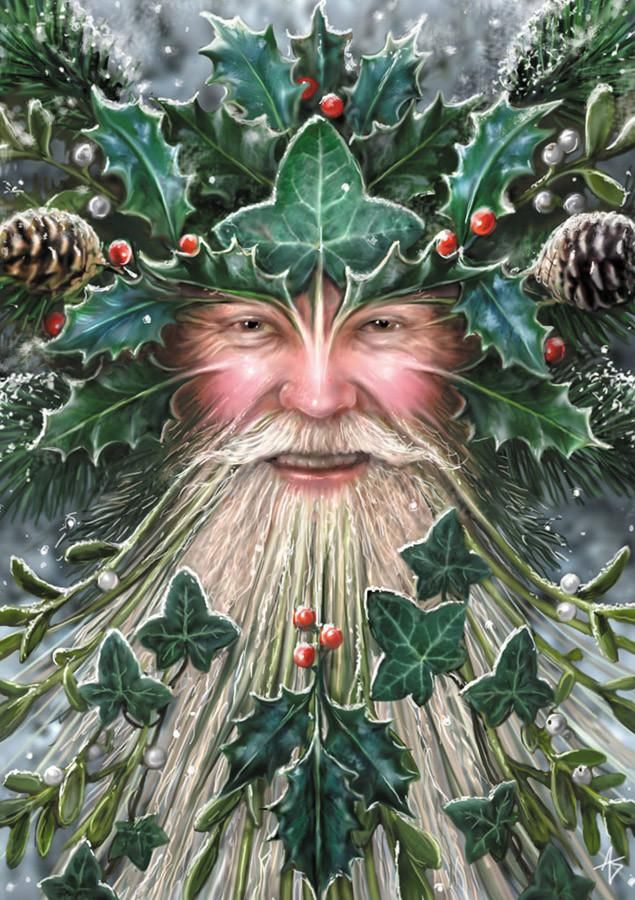THE SHADOW & THE DARK GODDESS
On a psychospiritual level, the theme of Samhain is acknowledging and connecting with the Shadow. The Shadow embodies those aspects of our being which live in our unconscious; those aspects of our being we have shunned and/or repressed. It is the metaphorical “skeleton in the closet”… perfectly suited to exploration at Samhain!

At this time of year, the Veil[i] is thin and the darkness is powerful, which makes connecting to the unseen and the unconscious much easier. For many, this deep dive into the dark unknown is frightening due to modern cultural identification of Samhain/Hallowe’en with horror; darkness and death as things to be feared.
Along this same line, the Shadow – our dark side – has also been identified as something to be feared, repressed, and even rejected, to our collective detriment. The evolution of modern psychology is finally regaining (and repackaging) the knowledge of our ancestors regarding the importance of exploring, understanding, and fully integrating the Shadow. However, this can be quite the journey given the cultural barriers of fear that have been built between our consciousness and the dark.
Which brings us, to the Dark Goddess.
As we moved through the Wheel of the Year, we experienced the God’s birth at Yule, his maturation and union with the Goddess through the fertility festivals (Imbolg, Ostara, Beltaine), his peak of strength at Midsummer, and, finally, his sacrifice and death through the harvest festivals (Lughnasadh, Mabon, Samhain). However, the key here is cycles. We know that the God will be reborn again at Yule. So, while the God resides for a time in the Underworld, as a co-ruler and consort to the Dark Goddess, it is the Goddess who lives there permanently. Ereshkigal is the Sumerian Queen of the Underworld, and quite possibly the original Dark Goddess. She is the balance that keeps the gates against chaos. She is the power at our source and core. She is the dark we fear and revere. She receives the dead and allows rebirth, and it is through her that we become our fully integrated Selves.
(See my Ereshkigal post for for a deeper look at the Dark Goddess as the true ruler of the Underworld.)
I briefly explored Ereshkigal in my Venus and The Eleusinian Mysteries post through the myth of Inanna’s descent to the Underworld. Inanna travels to the Underworld to see her sister, Ereshkigal, who immediately kills Inanna and hangs her on a hook for three days and nights. Through her death, Inanna connects with the Source, understands the role and necessity of death, and, finally, comes to see Ereshkigal as her Shadow. At this point Inanna is reborn and ascends from the Underworld, returning to life as a fully actualized being.
(If you are interested in the full myth “The Descent of Inanna”, here is the link : http://people.uncw.edu/deagona/myth/Descent%20Of%20Inanna.pdf.)
So, if we seek to fully integrate all aspects of our being, we must courageously descend to the realm of Ereshkigal and submit to her darkness. In the Underworld, we come face to face with our own “dark” side. We explore what resides in the Shadow, and why. This shadow side may include hatred, rage, prejudice, violence, desire, jealousy, morality, etc…. All those “nasty” things we pretend don’t exist for us.
Communion with the Shadow also includes facing our own mortality – our own inevitable death – and all the fears and anxieties associated with it.
Ultimately, we acknowledge all aspects in the Shadow – along with our own death – and embrace them as part of our being and part of life. Once completed, Ereshkigal enables our rebirth as fully integrated Selves[ii].
While a personal descent can be undertaken at any time, the energies at Samhain are especially attuned to this journey. The Veil is particularly thin at Samhain, as we enter the darkest part of the year[iii]. Considering our obsession with light and sight, it isn’t hard to understand how the dark both represents and facilitates communion with the unknown, the mysteries, the occult…and the Shadow.
As I close off here, I would like to leave you with this thought: whether you name her the Shadow, the Dark Goddess, Ereshkigal, or not at all… She is part of you. So, I encourage you to take some time this Samhain and commune with the Dark Goddess.
May Ereshkigal help you remember, respect, release… and renew.
[i] The Veil is the barrier between worlds: mundane/spiritual, seen/unseen, conscious/unconscious, living/dead, etc…)
[ii] It should be understood that the descent to meet the Shadow is a multifaceted and ongoing process. To maintain a truly integrated Self, we need to face our Shadow regularly and bring its knowledge to light.
[iii] The Veil is also thinnest at Beltaine (opposite Samhain on the Wheel of the Year) when we enter the lightest part of the year. However, the world that opens to us then is the Otherworld.
